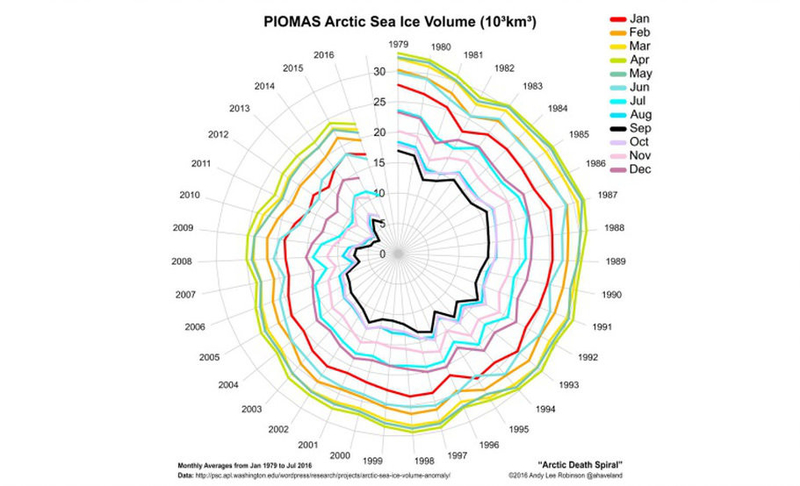The science behind Science Based Target Setting
Almost 400 companies from across the world are now committed to setting evidence-based corporate carbon targets. The Science Based Target Initiative (SBTI) – a collaborative project between the CDP, UN, WRI and WWF - has recruited dozens of global giants from many economic sectors to the ‘Call To Action’, including Coca-Cola, Procter & Gamble and Walmart (1). As investor interest in climate risk is increasing, the ability to demonstrate emissions reduction in line with the latest climate science is becoming the new ‘normal’.
The alignment of corporate objectives with the imperative need to reduce Greenhouse Gas (GHG) emissions to avoid climate breakdown is a positive development and gives hope that the Paris Agreement may be effective. But with so much riding on corporate action in response to climate change, the underlying basis for the science-based target (SBT) movement must stand scrutiny: how robust are the methods for science-based target setting, on which of the various future climate scenarios are they based, and how much ‘room for uncertainty’ are they giving? The precautionary principle would suggest leaving a wide margin for error in order to avoid dangerous, runaway climate change.
In the first of a three-part series of thought-pieces on the science-based target setting movement, Verco’s Policy, Strategy and Compliance team explore the latest findings of climate change science, the consequences for corporate sustainability and target setting, and the challenges faced by the SBTI in developing and enforcing truly science-based emissions reduction.
The science of climate change
In the 2010 book Merchants of Doubt (2), American science historians Naomi Oreskes and Erik M. Conway draw parallels between the public debate around global warming and earlier controversies such as the clinical evidence for the impacts of tobacco smoke on human health. While the scientific consensus on climate change’s man-made origins is almost unanimous (97%, according to multiple studies in peer-reviewed journals (3)), by contrast the public debate is characterised by misinformation and a lack of balance, with climate change deniers overly represented (4). The message from those studying the latest climate data and ice samples is that of a growing climate emergency, one that policy makers should be acting on urgently now.
The 21st century has seen more temperature records broken than any other in recorded history. 2016 was the hottest year on record since modern recordkeeping began in 1880, according to Nasa (5) and the USA’s National Oceanic and Atmospheric Administration (NOAA)(6), and the third year in a row to set a new record for global average surface temperatures. Average temperatures are now 1 degree Celsius warmer than the average for the mid-20th century.
The changes occurring in the Arctic region – where temperatures are rising two to three times faster than the global average (7) - are alarming. Striking visible evidence of this is the vanishing of Arctic sea ice in summer, a consequence of global warming which is occurring more rapidly than even the experts predicted. In his 2016 book A Farewell to Ice (8), Peter Wadhams - former director of the Scott Polar Research Institute and professor of ocean physics at Cambridge – states that the Arctic is facing a decline which may see the entire summer ice cover collapse in a matter of a few years from today. In 1970, when Wadhams completed his first of 50 polar expeditions, Arctic sea ice coverage was around 8 million square kilometers at its September minimum. Just 45 years later, it has more than halved to 3.4m and is shrinking by 13% per decade. The sea ice is thinning as well, and its volume has shrunk even faster than its area, which is no more apparent than in the now infamous ‘Arctic death spiral’ produced by Andy Lee Robinson and Haveland (9).

The probability of total sea ice loss in summer is heightened by strong positive feedback effects (10); these make the likelihood of sea ice recovery virtually zero, at least on a timescale of centuries. The consequences of such radical changes to a significant portion of the planet’s surface are uncertain, but are predicted to include more extreme weather events and potentially also an eventual slowing or even cessation of the Gulf Stream. Although such an outcome feels more like the science fiction of The Day After Tomorrow, it should expunge any complacency that the British Isles will be given an easy ride by climate change. The dramatic reductions in Arctic sea ice extent are the most glaring canary in the climate change coal mine.
Looking beyond sea ice, a warmer world leads to increased concentrations of water vapour in the air – itself a greenhouse gas. The liberation of carbon dioxide and methane trapped in the Earth’s deep soil layers (11) and permafrost (12) presents a further previously untapped source of planet-warming gases.
Paris has put the world on the right track, but those who have ratified it must “pursue efforts to limit global temperature rise this century to 1.5°C above pre-industrial levels.” That means reducing emissions much more deeply and faster than most people realise.
Other articles about Science based targets:
Science based targets: An introduction
The trouble with science based targets
(1) http://sciencebasedtargets.org/companies-taking-action/
(2) http://merchantsofdoubt.org/
(3) J. Cook, et al, "Consensus on consensus: a synthesis of consensus estimates on human-caused global warming," Environmental Research Letters Vol. 11 No. 4, (13 April 2016); DOI:10.1088/1748-9326/11/4/048002
(4) https://www.theguardian.com/environment/climate-consensus-97-per-cent/2013/dec/06/media-failure-iraq-war-climate-change
(5) https://www.giss.nasa.gov/research/news/20170118/
(6) https://climate.nasa.gov/news/2537/nasa-noaa-data-show-2016-warmest-year-on-record-globally/
(7) https://www.economist.com/news/leaders/21721379-current-trends-arctic-will-be-ice-free-summer-2040-arctic-it-known-today
(8) https://www.penguin.co.uk/books/273799/a-farewell-to-ice/
(9) https://haveland.com/share/arctic-death-spiral.jpg
(10) The feedback mechanisms caused by melting Arctic ice alone are highly consequential and are already being detected. With reduced ice coverage, the level of reflectiveness of the Earth’s land mass – known as the ‘albedo’ – is reduced, and more of the Sun’s heat absorbed by the darker-coloured land and oceans. With greater areas of open sea, the average size of waves increases, breaking up more ice.
(11) http://science.sciencemag.org/content/355/6332/1420
(12) http://www.nature.com/nature/journal/v520/n7546/full/nature14338.html